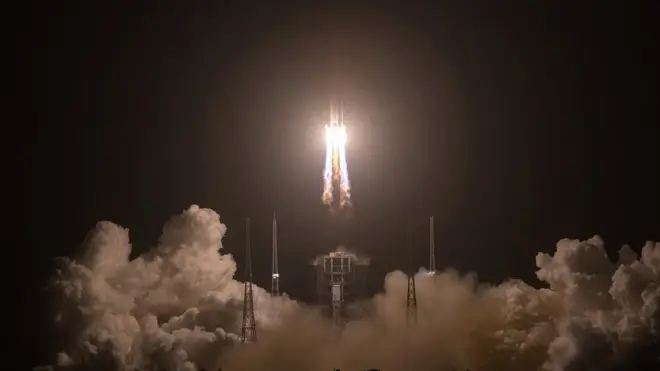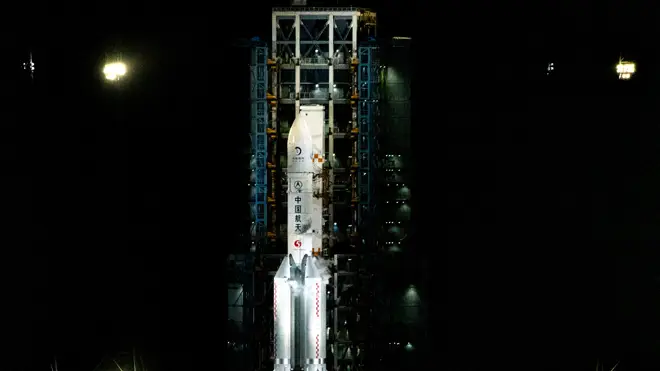
James O'Brien 10am - 1pm
24 November 2020, 06:55

China has launched a mission to bring back material from the moon's surface for the first time in more than 40 years.
Lunar mission Chang'e 5 is the country's boldest lunar mission yet.
If successful, it would be a major advance for China's space programme, and experts say it could pave the way for bringing samples back from Mars or even a crewed lunar mission.
The Chang'e 5 spacecraft blasted off on a Long March-5Y rocket from the Wenchang launch centre along the coast of the southern island province of Hainan.

Minutes after liftoff, the spacecraft separated from the rocket's first and second stages and slipped into Earth-moon transfer orbit. Spacecraft typically take three days to reach the moon.
The mission's key task is to drill two metres beneath the moon's surface and scoop up about 2kg of rocks and other debris to be brought back to Earth, according to Nasa.
That would offer the first opportunity for scientists to study newly obtained lunar material since the American and Russian missions of the 1960s and 1970s.
The Chang'e 5 lander can only stay one lunar daytime, or about 14 Earth days, because it lacks the radioisotope heating units to withstand the moon's freezing nights.
The lander will dig for materials with its drill and robotic arm and transfer them to what is called an ascender, which will lift off from the moon and dock with the service capsule. The materials will then be moved to the return capsule to be hauled back to Earth.
The mission is among China's boldest since it first put a man in space in 2003, becoming only the third nation to do so after the US and Russia.
While many of China's crewed space flight achievements, including building an experimental space station and conducting a spacewalk, reproduce those of other countries from years past, the China National Space Administration is moving into new territory.
Chang'e 4 - which made the first soft landing on the moon's relatively unexplored far side almost two years ago - is collecting full measurements of radiation exposure from the lunar surface, information vital for any country that plans to send astronauts to the moon.
China in July became one of three countries to have launched a mission to Mars, with an orbiter and a rover that will search for signs of water on the red planet. Officials say the spacecraft Tianwen 1 is on course to arrive at Mars around February.
China has increasingly engaged with foreign countries on missions, and the European Space Agency will be providing important ground station information for Chang'e 5.